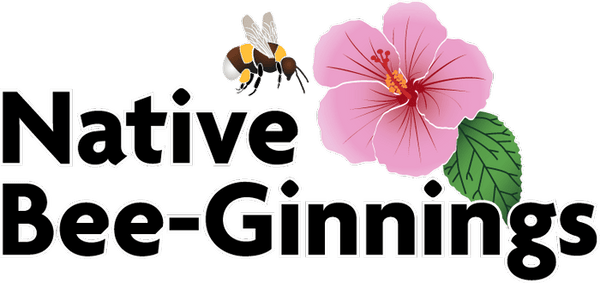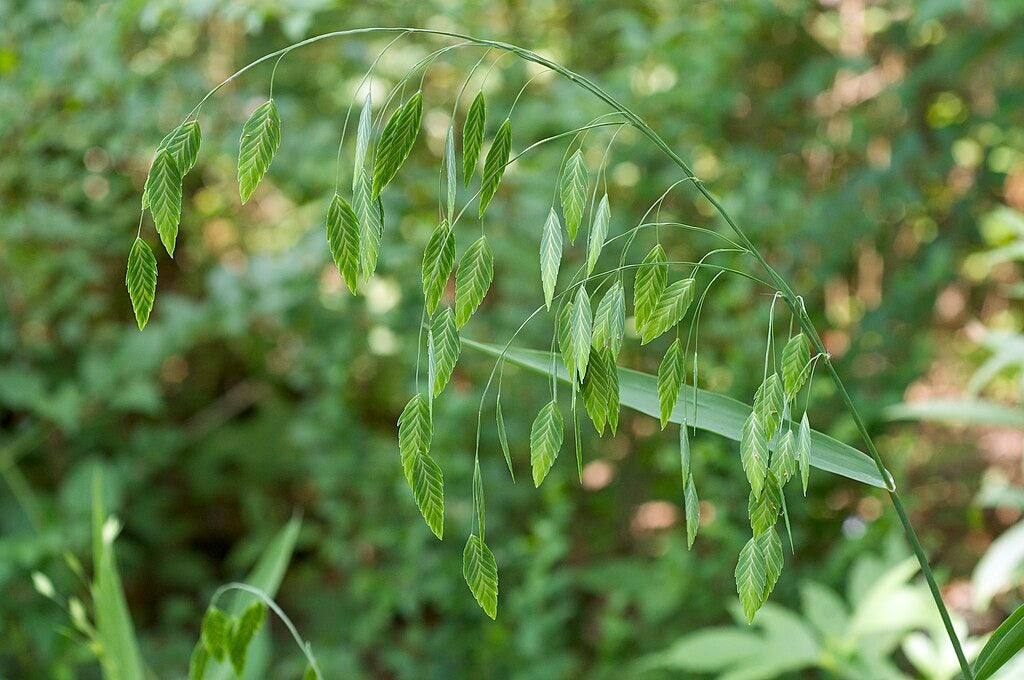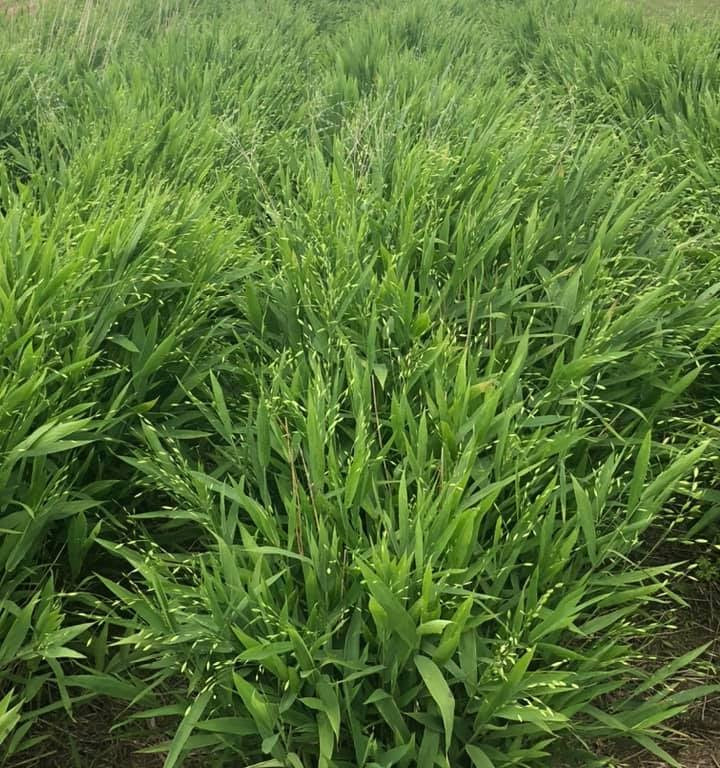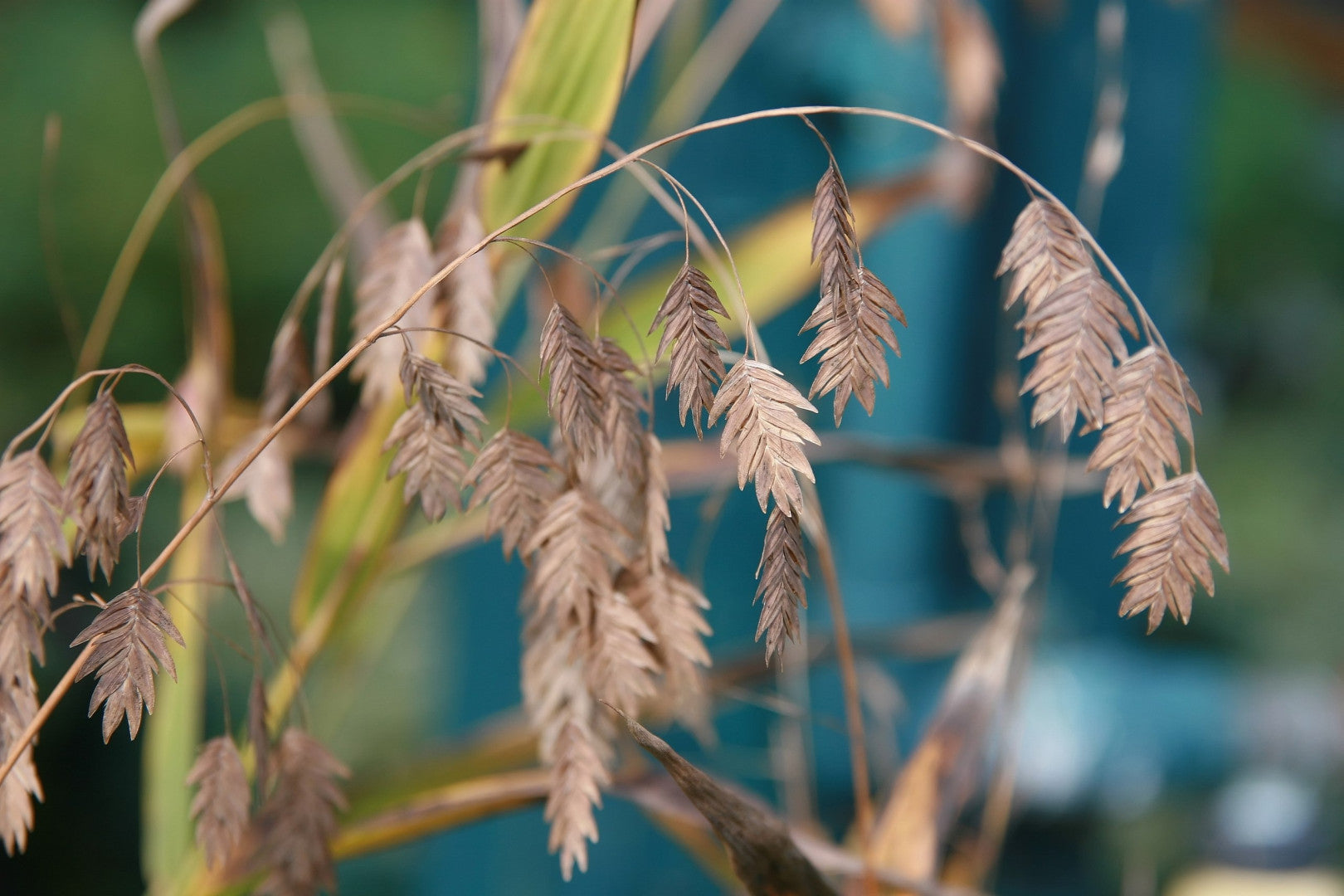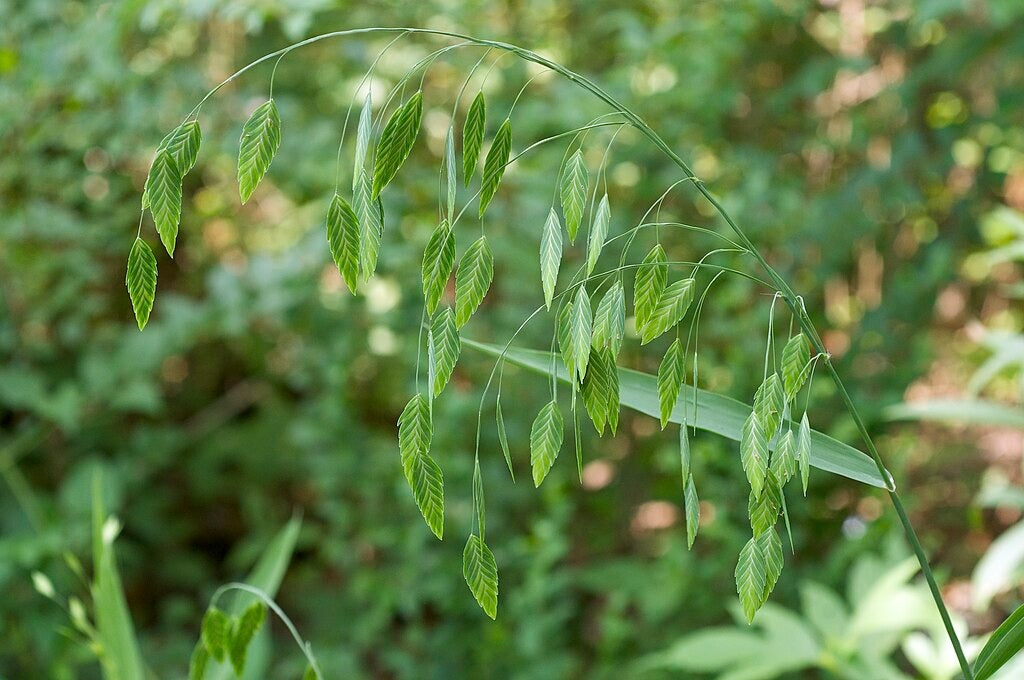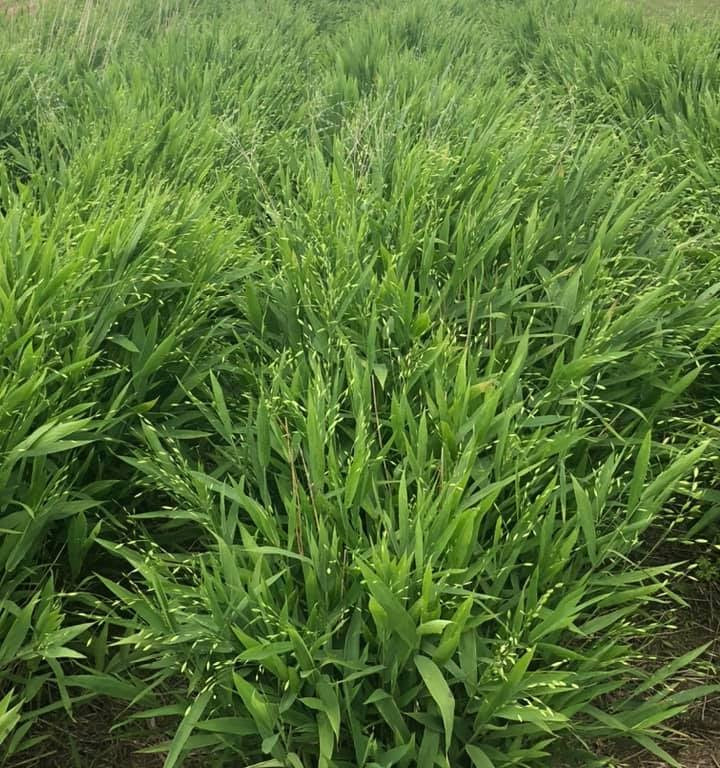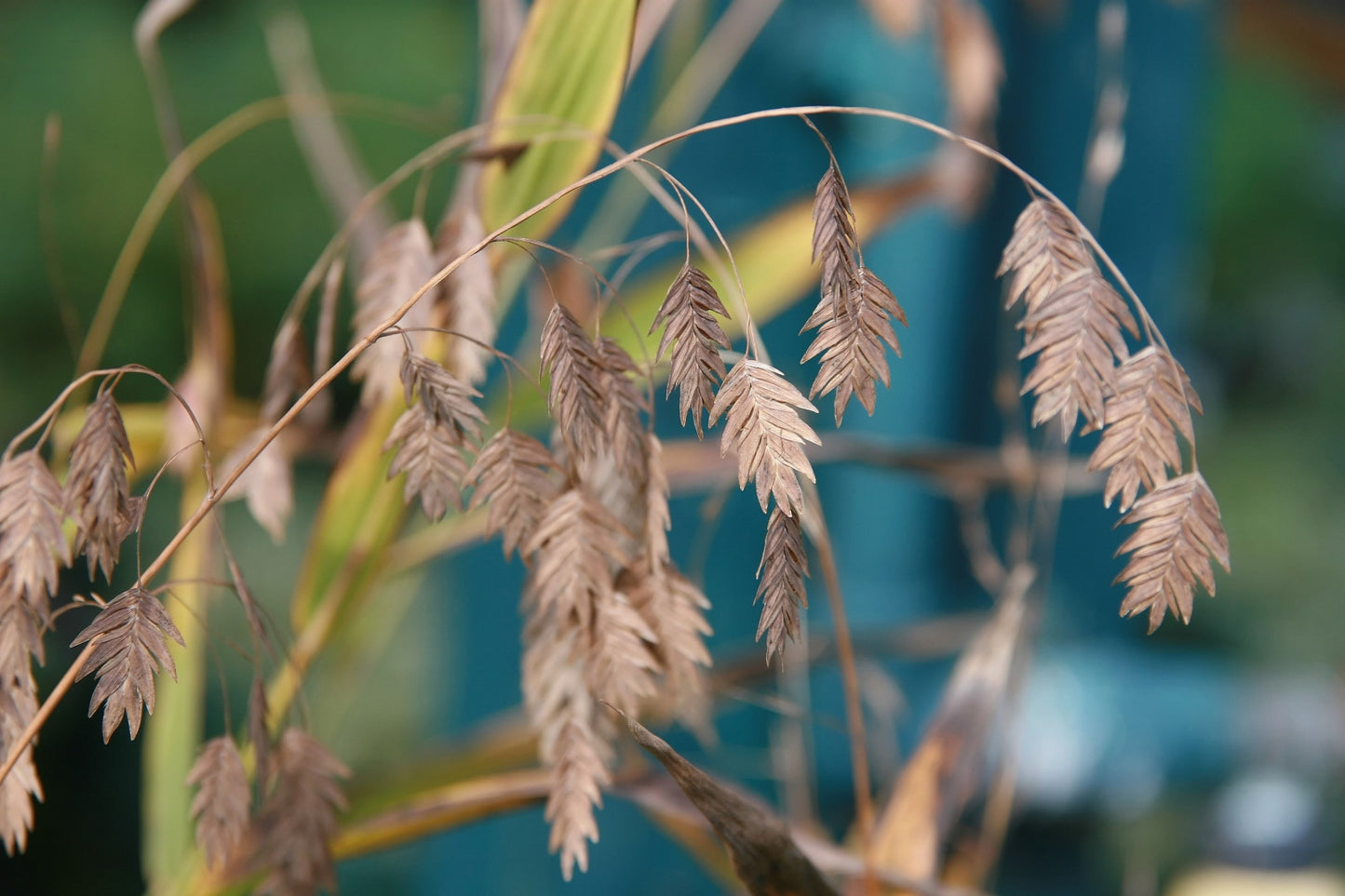About This Plant
Chasmanthium latifolium (commonly known as northern sea oats or inland sea oats) is a perennial, ornamental grass native to North America, mainly thriving in woodland settings, floodplains, and along stream banks. It is highly valued for its unique, flat, oat-like seed heads that dangle gracefully from arching stems, providing visual interest and a distinctive texture in the landscape. These seed heads transition from green in the summer to a bronze or copper color in the fall, adding seasonal beauty.
When it comes to soil moisture, Chasmanthium latifolium is a resilient plant. It prefers moist, well-drained soils but can tolerate various conditions, including dry to moderately moist environments. This adaptability makes it a versatile choice for a range of gardening situations, from areas with regular watering to naturally damp conditions.
This species is quite adaptable to different light conditions. It can grow in full sun, partial shade, or full shade, although it performs best in partial shade. The plant will grow more robustly in full sun but may require more frequent watering to maintain healthy foliage. The growth may be a bit slower in full shade, but it will still thrive, making it an excellent choice for woodland gardens or shaded areas.
Chasmanthium latifolium is a perennial species that will return year after year, forming clumps that gradually spread by rhizomes and self-seeding. It typically requires cold stratification for about 30 days to propagate from seed to ensure good germination.
This grass is often used in erosion control projects due to its fibrous root system, which helps stabilize soil. It is also prized in naturalized gardens, meadows, or woodland borders for its ability to attract birds, which feed on the seeds, and for its drought tolerance once established. The striking seed heads make excellent additions to dried floral arrangements, enhancing their ornamental appeal.
